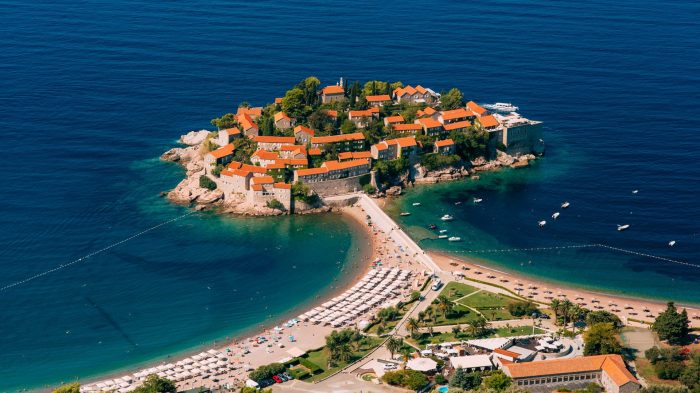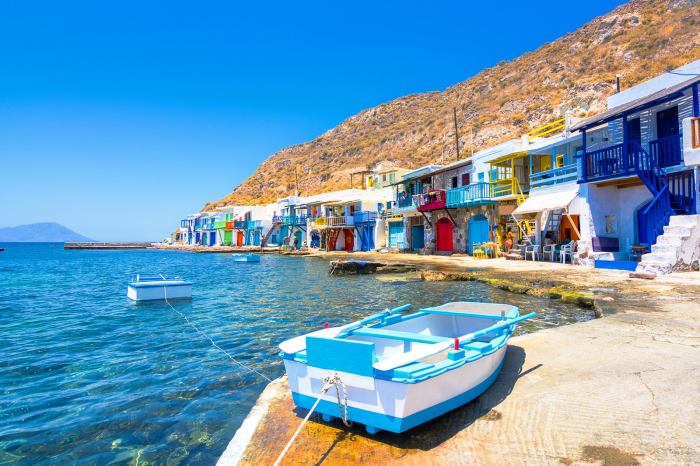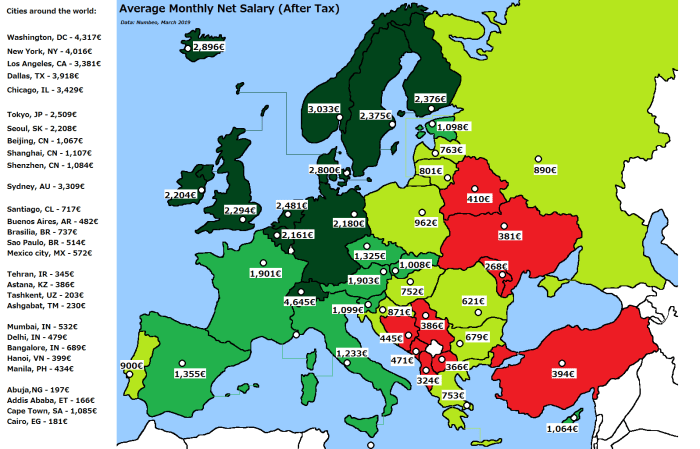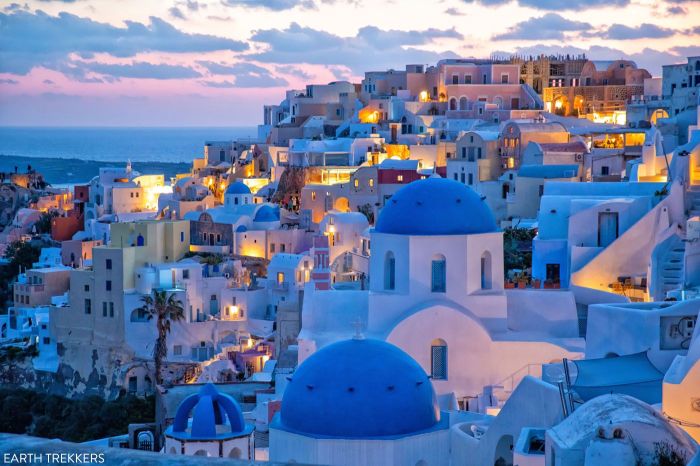Top 10 Places To Visit In Montenegro
Top 10 Places To Visit in Montenegro: Get ready to be blown away by this hidden gem in the Balkans! From breathtaking mountains to sparkling turquoise waters, Montenegro offers a diverse landscape that’ll leave you wanting more. Whether you’re an adventure seeker, a history buff, or a nature enthusiast, this tiny country packs a powerful punch.
So, pack your bags, grab your camera, and get ready to explore the magic of Montenegro.
Montenegro is a country of dramatic contrasts, with towering mountains, sparkling lakes, and a stunning coastline. It’s a place where you can hike through ancient forests, swim in crystal-clear waters, and explore charming medieval towns. Whether you’re looking for a relaxing beach vacation, an adrenaline-pumping adventure, or a cultural immersion, Montenegro has something for everyone.
Introduction
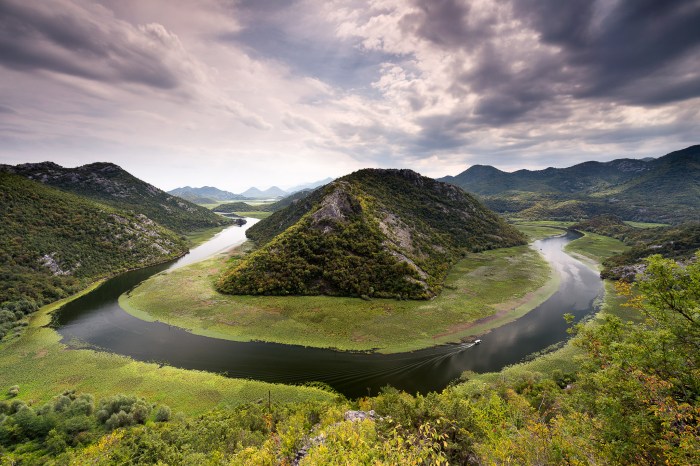
Montenegro, a small Balkan nation nestled on the Adriatic Sea, is a hidden gem waiting to be discovered. Its stunning natural beauty, from snow-capped mountains to pristine beaches, offers a diverse landscape that appeals to a wide range of travelers.
Montenegro is quickly becoming a popular destination for those seeking an authentic European experience, free from the crowds and tourist traps found in more popular destinations.
Montenegro’s Appeal to Diverse Travelers
Montenegro caters to a variety of travel styles. Adventure seekers can find their thrills hiking through the Durmitor National Park, kayaking on Lake Skadar, or white-water rafting down the Tara River. History buffs will be captivated by the ancient walled city of Kotor, a UNESCO World Heritage site, or the charming medieval towns of Budva and Perast.
Nature enthusiasts will be mesmerized by the country’s lush forests, sparkling lakes, and dramatic coastline. Whether you’re looking for a relaxing beach vacation, an action-packed adventure, or a cultural immersion, Montenegro has something to offer everyone.
Kotor Bay
Kotor Bay, also known as the Bay of Kotor, is a stunning fjord-like inlet on the Adriatic coast of Montenegro. It’s a must-visit destination for anyone seeking a blend of history, natural beauty, and cultural experiences.
Historical Significance and UNESCO World Heritage Status, Top 10 Places To Visit in Montenegro
Kotor Bay’s history dates back to ancient times, with evidence of human settlements from the Roman period. The bay has been a strategic location for centuries, playing a significant role in the maritime trade routes of the Mediterranean. It has also been influenced by various empires and cultures, including the Venetians, Ottomans, and Austrians.The Bay of Kotor was designated a UNESCO World Heritage Site in 1979, recognizing its exceptional universal value.
The UNESCO designation highlights the bay’s rich cultural heritage, including its well-preserved medieval towns, fortified walls, and numerous churches and monasteries. The bay’s natural beauty, with its dramatic mountains and clear waters, also contributes to its UNESCO status.
Scenic Beauty of Kotor Bay
Kotor Bay is renowned for its breathtaking beauty, characterized by a unique combination of rugged mountains, sparkling waters, and charming coastal towns. The towering mountains that surround the bay create a dramatic backdrop, while the clear waters of the Adriatic Sea reflect the surrounding scenery.
The bay’s narrow inlets and winding channels offer picturesque views and opportunities for exploration.The towns lining the shores of Kotor Bay are equally captivating. The old town of Kotor, with its Venetian-era architecture, is a UNESCO World Heritage Site in itself.
Perast, a picturesque town known for its two artificial islands, offers a glimpse into the region’s maritime past. Other charming coastal towns like Risan, Herceg Novi, and Tivat contribute to the bay’s unique charm and cultural richness.
Top Attractions in Kotor Bay
Kotor Bay offers a diverse range of attractions for visitors. Here’s a table showcasing some of the top destinations:
| Attraction | Description | Old Town of Kotor | A UNESCO World Heritage Site, the Old Town of Kotor is a well-preserved medieval town with narrow streets, Venetian architecture, and numerous historical landmarks, including St. Tryphon's Cathedral and the Clock Tower. | Perast | This picturesque town is known for its two artificial islands, Our Lady of the Rocks and St. George's Island. The islands offer stunning views of the bay and are home to historic churches and monasteries. | Bay of Kotor | The bay itself is a major attraction, offering opportunities for boating, swimming, kayaking, and exploring the surrounding islands and coastal towns. | Lovcen National Park | Located above Kotor Bay, this national park offers breathtaking views of the bay and the surrounding mountains. It's also home to the Mausoleum of Petar II Petrovic Njegos, a significant historical landmark. | Blue Cave | This hidden gem is a natural sea cave located near the town of Herceg Novi. The cave's interior is illuminated by sunlight, creating a magical blue glow. |
|---|
Budva Riviera
The Budva Riviera is a vibrant stretch of coastline in Montenegro, renowned for its beautiful beaches, lively nightlife, and rich history. This picturesque region offers a perfect blend of relaxation and excitement, attracting visitors from all over the world.
Popular Beaches
The Budva Riviera boasts a variety of stunning beaches, each with its unique charm. Here are some of the most popular:
- Jaz Beach:Known for its long stretch of golden sand and crystal-clear waters, Jaz Beach is a popular destination for sunbathers, swimmers, and water sports enthusiasts. It’s also a hub for music festivals and events, adding to its vibrant atmosphere.
- Mogren Beach:Located just a short walk from Budva’s old town, Mogren Beach is a smaller, more secluded beach with picturesque views of the Adriatic Sea. It’s a great spot for swimming, sunbathing, and enjoying the tranquility of the surroundings.
- Slovenska Plaza Beach:This long, sandy beach is a favorite among families due to its shallow waters and calm waves. It’s also well-equipped with facilities, including restaurants, cafes, and water sports rentals.
- Sveti Stefan:This iconic island, connected to the mainland by a narrow isthmus, is home to a luxurious hotel and a beautiful beach. Sveti Stefan offers a glimpse into the region’s rich history and provides a truly unforgettable experience.
Budva’s History
Budva is a town steeped in history, dating back to the 5th century BC. Its ancient walls, built by the Venetians in the 16th century, still stand today, offering a glimpse into the town’s rich past. The Venetian architecture is evident throughout the old town, with narrow cobblestone streets, charming squares, and historic buildings.
Montenegro is seriously beautiful, like seriously. From the Bay of Kotor to Durmitor National Park, there’s tons to see. If you’re looking for some epic scenery, check out the Top 10 Places To Visit in New Zealand , it’s got a similar vibe.
But Montenegro is definitely more chill, with less crowds and a lot more local charm.
The town’s history is also reflected in its numerous churches, including the Church of St. John, built in the 7th century, and the Church of St. Mary, dating back to the 12th century.
Durmitor National Park
Durmitor National Park is a true gem in Montenegro, boasting breathtaking mountain scenery and diverse ecosystems. Located in the northwestern part of the country, this park is a UNESCO World Heritage Site and offers an unforgettable experience for nature enthusiasts and outdoor adventurers alike.
Mountain Scenery and Ecosystems
Durmitor National Park is characterized by its towering limestone peaks, deep canyons, and lush forests. The park’s highest peak, Bobotov Kuk, reaches a height of 2,523 meters (8,278 feet), offering panoramic views of the surrounding landscape. The park is home to a variety of ecosystems, including alpine meadows, coniferous forests, and glacial valleys.
The diverse flora and fauna add to the park’s natural beauty, with species such as the brown bear, wolf, and golden eagle calling this area home.
Outdoor Activities
Durmitor National Park is a paradise for outdoor enthusiasts, offering a wide range of activities to suit every taste.
Hiking
The park boasts a network of well-maintained hiking trails, ranging from easy strolls to challenging multi-day treks. Some popular hiking destinations include the Black Lake, the Tara River Canyon, and the Savin Kuk peak.
Montenegro is a beautiful country with stunning mountains, crystal clear waters, and charming towns. If you’re looking for a unique travel experience, you should definitely check out Montenegro’s hidden gems. If you’re more into windmills and canals, then you might want to check out Top 10 Places To Visit in The Netherlands.
But, if you’re looking for an adventure in the Balkans, Montenegro is definitely worth the trip!
Skiing
In the winter months, Durmitor transforms into a winter wonderland, offering excellent skiing conditions. The park has several ski resorts, including Žabljak, which is the highest ski resort in the Balkans.
Kayaking
The Tara River, which flows through the park, is a popular destination for kayaking and rafting. The river’s clear waters and stunning scenery offer an unforgettable experience.
Key Attractions
Here are some of the key attractions within Durmitor National Park:
| Attraction | Description |
|---|---|
| Tara River Canyon | The Tara River Canyon, known as the “Grand Canyon of Europe,” is one of the deepest canyons in the world, reaching depths of over 1,300 meters (4,265 feet). It’s a popular spot for rafting, kayaking, and hiking. |
| Black Lake | Black Lake, a glacial lake nestled amidst the mountains, is a popular spot for swimming, boating, and fishing. Its crystal-clear waters and stunning surroundings make it a truly picturesque destination. |
| Savin Kuk Peak | Savin Kuk Peak, with its elevation of 2,313 meters (7,589 feet), offers breathtaking panoramic views of the surrounding mountains and valleys. It’s a challenging but rewarding hike for experienced mountaineers. |
Sveti Stefan
Sveti Stefan is a small, fortified island located on the Budva Riviera in Montenegro. Once a fishing village, it was transformed into a luxurious resort in the 1960s. The island is connected to the mainland by a narrow isthmus, and its unique architecture and history make it one of the most popular destinations in Montenegro.
History and Architecture
Sveti Stefan’s history dates back to the 15th century when it was a fortified island used to defend the Budva Riviera from pirates. The island was later abandoned and then re-established as a fishing village in the 19th century. In the 1960s, the village was transformed into a luxury resort by the Yugoslav government.
The island’s original architecture, including its traditional stone houses, was preserved, and the resort was designed to blend seamlessly with the island’s natural beauty.
Exclusive Atmosphere and Appeal to High-End Travelers
Sveti Stefan is a very exclusive resort, with only a limited number of guests allowed on the island at any given time. The resort is known for its privacy, luxury, and stunning views of the Adriatic Sea. The island has been a popular destination for celebrities and high-end travelers for decades.
Accommodations and Amenities
Sveti Stefan offers a variety of accommodations, including luxurious villas, suites, and rooms. The resort also features a number of amenities, including a private beach, a swimming pool, a spa, and several restaurants. Guests can enjoy a range of activities, including swimming, sunbathing, fishing, and exploring the surrounding area.
Lovcen National Park

Escape the hustle and bustle of the coast and immerse yourself in the dramatic beauty of Lovcen National Park. This mountainous region boasts towering limestone peaks, breathtaking panoramic views, and a rich history that will leave you in awe.
Njegos Mausoleum
The Njegos Mausoleum, perched atop Mount Lovcen, is a prominent landmark within the park. This striking structure, built in the early 20th century, serves as the final resting place of Petar II Petrovic Njegos, a renowned Montenegrin poet, philosopher, and ruler.
The mausoleum is a testament to Njegos’s legacy and offers stunning views of the surrounding landscape. Its unique design, resembling a tomb with a domed roof, blends seamlessly with the rugged beauty of the mountain. Inside, you’ll find a bronze statue of Njegos and a crypt containing his remains.
The mausoleum is a popular destination for history buffs and nature enthusiasts alike.
Hiking Trails and Viewpoints
Lovcen National Park is a haven for hikers and nature lovers. The park boasts a network of well-maintained trails that lead to stunning viewpoints and hidden gems. One of the most popular trails is the path to the Njegos Mausoleum, which offers panoramic views of the Kotor Bay and the surrounding mountains.Here are some of the most notable trails and viewpoints in Lovcen National Park:
- The Njegos Mausoleum Trail:This challenging trail leads to the summit of Mount Lovcen and the Njegos Mausoleum, offering breathtaking panoramic views along the way.
- The Jezerski Vrch Trail:This scenic trail leads to Jezerski Vrch, a peak with stunning views of the surrounding mountains and valleys.
- The Katun Trail:This trail leads to Katun, a traditional Montenegrin village nestled in the heart of the park.
- The Ivanova Korita Trail:This trail leads to Ivanova Korita, a stunning waterfall and natural pool.
Skadar Lake
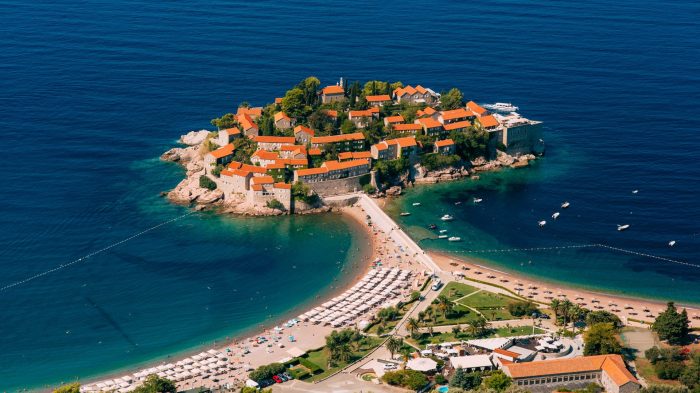
Skadar Lake, also known as Lake Scutari, is the largest lake in the Balkans and a true gem of Montenegro. This natural wonder is shared with Albania, but the Montenegrin side boasts a stunning array of landscapes, rich biodiversity, and historical significance.
Biodiversity of Skadar Lake
Skadar Lake is a haven for diverse flora and fauna, making it a haven for nature enthusiasts. Its clear waters teem with fish, including endemic species like the Skadar Lake bleak and the European eel. The surrounding wetlands provide a vital habitat for numerous bird species, including the Dalmatian pelican, the grey heron, and the Eurasian spoonbill.
Montenegro is a stunning country with mountains, beaches, and ancient history. You’ll want to make sure you see Kotor Bay, Durmitor National Park, and the Sveti Stefan island. If you’re looking for a similar vibe with a Greek twist, check out Top 10 Places To Visit in Milos.
Milos is an island with unique beaches, volcanic landscapes, and a laid-back atmosphere. Once you’ve explored Montenegro, be sure to add Milos to your travel list.
The lake is also home to various mammals, such as the otter, the wild boar, and the red deer.
Water Activities on Skadar Lake
Skadar Lake offers a variety of water activities to enjoy.
- Boating: Explore the lake’s hidden coves and islands by boat, enjoying the picturesque scenery and the chance to spot wildlife.
- Fishing: The lake is a popular destination for anglers, with a wide variety of fish species to catch, including carp, catfish, and pike.
- Birdwatching: Skadar Lake is a birdwatcher’s paradise, with over 270 bird species recorded in the area.
Historical Significance of Skadar Lake
Skadar Lake has played a crucial role in the history of Montenegro and the region. The lake and its surrounding villages have been inhabited for centuries, with evidence of settlements dating back to the Roman period. The lake has also been a significant strategic location, serving as a natural barrier and a source of resources.
Many historical sites dot the lake’s shores, including the ruins of medieval fortresses and monasteries, offering a glimpse into the region’s rich past.
Ostrog Monastery: Top 10 Places To Visit In Montenegro
Ostrog Monastery, perched dramatically on a sheer cliff face, is one of Montenegro’s most sacred and visited sites. This Serbian Orthodox monastery is a testament to faith and resilience, drawing pilgrims from around the world who come to seek solace, healing, and spiritual renewal.
Religious Significance
Ostrog Monastery holds immense religious significance, particularly for the Serbian Orthodox Church. It is dedicated to Saint Basil of Ostrog, a 17th-century Serbian bishop renowned for his miracles and healing powers. The monastery is believed to be a place of divine intervention, where prayers are answered and miracles occur.
Architectural Features
The monastery’s unique architecture is as awe-inspiring as its location. Carved into the rock face, it consists of two main parts: the Lower Monastery and the Upper Monastery. The Lower Monastery, accessible by a winding road, houses a church dedicated to the Holy Trinity.
The Upper Monastery, reached by a steep, narrow path, is dedicated to Saint Basil. The Upper Monastery is a breathtaking sight, with its chapel built into a cave. It is said that Saint Basil’s relics are kept within this chapel, attracting countless pilgrims seeking his blessings.
The monastery’s architecture reflects a blend of Byzantine and Serbian styles, showcasing intricate frescoes and ornate carvings.
History and Legends
The history of Ostrog Monastery is steeped in legend and tradition. The monastery was founded in the 17th century by Herzegovinian Metropolitan Vasilije, who chose this remote and challenging location for its spiritual isolation. The monastery has endured numerous trials throughout its history, including fires, earthquakes, and wars.
However, it has always been rebuilt, a testament to the unwavering faith of its inhabitants. Numerous legends surround Ostrog Monastery, many centered around Saint Basil. One legend tells of a local woman who, unable to bear children, prayed to Saint Basil for help.
She was miraculously granted a son, and in gratitude, she built a chapel at the monastery. Another legend tells of a Turkish soldier who, after witnessing a miracle at the monastery, converted to Christianity.Ostrog Monastery is a powerful symbol of faith, resilience, and the enduring power of spirituality.
Its dramatic location, unique architecture, and rich history continue to draw pilgrims from all walks of life, seeking solace, healing, and a connection to the divine.
Ulcinj
Ulcinj, Montenegro’s oldest town, is a captivating blend of history, culture, and natural beauty. Situated on the southern Adriatic coast, Ulcinj boasts a rich past, evident in its architecture, traditions, and vibrant atmosphere. Its strategic location on the Adriatic Sea has made it a crossroads of civilizations, resulting in a fascinating tapestry of influences that continue to shape the town’s unique identity.
The Historical and Cultural Significance of Ulcinj
Ulcinj’s history dates back to ancient times, with evidence of settlements dating back to the Illyrian period. The town has been ruled by various empires, including the Romans, Byzantines, Venetians, and Ottomans, each leaving their mark on the city’s cultural landscape.
Ulcinj’s strategic location on the Adriatic Sea has made it a prominent trading center and a point of cultural exchange. The town’s historical significance is reflected in its numerous architectural landmarks, including the Venetian walls and Ottoman-era mosques.
The Unique Architecture and Atmosphere of Ulcinj
Ulcinj’s architecture is a testament to its diverse past. The town’s historic core is characterized by narrow, winding streets lined with traditional stone houses, reflecting the influence of Venetian and Ottoman architecture. The Venetian walls, built in the 16th century, encircle the old town, offering panoramic views of the Adriatic Sea and the surrounding landscape.
The town’s Ottoman legacy is evident in its mosques, such as the Old Mosque, built in the 16th century, and the New Mosque, built in the 18th century. Ulcinj’s atmosphere is vibrant and cosmopolitan, reflecting its rich history and diverse cultural influences.
The Beaches of Ulcinj
Ulcinj is renowned for its pristine beaches, known for their fine, golden sands and crystal-clear waters. The most popular beach in Ulcinj is Long Beach, which stretches for over 13 kilometers along the coastline. Long Beach is a popular destination for swimming, sunbathing, and water sports.
Other popular beaches in Ulcinj include Mala Plaža(Small Beach) and Velika Plaža(Big Beach). Ulcinj’s beaches are also known for their therapeutic properties, as the sand contains high levels of minerals.
Tivat
Tivat, nestled on the shores of the Bay of Kotor, is a charming town that has blossomed into a thriving maritime center in Montenegro. It’s a destination that seamlessly blends natural beauty with modern amenities, attracting visitors from around the globe.
Modern Marina Facilities and Luxury Accommodations
Tivat boasts state-of-the-art marina facilities that cater to the discerning traveler. The most notable is Porto Montenegro, a world-class yachting destination that has transformed Tivat into a hub for luxury travel. This complex offers a wide array of services, including berthing for superyachts, repair and maintenance facilities, and a vibrant waterfront promenade lined with upscale shops, restaurants, and bars.Beyond Porto Montenegro, Tivat also offers a selection of luxurious hotels and resorts.
These accommodations provide guests with a comfortable and stylish base to explore the surrounding region.
Historical Attractions
While Tivat has embraced its modern identity as a maritime center, it also possesses a rich history that is evident in its attractions. The Porto Montenegro complex, for instance, was built on the site of a former naval base.
Today, the complex is a testament to Tivat’s evolving landscape, seamlessly blending historical elements with modern design.Another historical gem is Vrmac Mountain, which looms over the town. This verdant mountain offers breathtaking panoramic views of the Bay of Kotor and is a popular spot for hiking and nature walks.
Ultimate Conclusion
From the historic charm of Kotor Bay to the rugged beauty of Durmitor National Park, Montenegro is a country that will leave a lasting impression. With its diverse landscapes, rich history, and welcoming people, Montenegro is a destination that you’ll never forget.
So, what are you waiting for? Start planning your trip today and discover the magic of Montenegro for yourself!
General Inquiries
What is the best time to visit Montenegro?
The best time to visit Montenegro depends on your interests. Spring and fall offer mild weather and fewer crowds, while summer is perfect for beach activities. If you’re interested in skiing, winter is the best time to visit.
How much does it cost to travel to Montenegro?
Montenegro is a relatively affordable destination, especially compared to other European countries. You can expect to spend around $50-$100 per day for accommodation, food, and activities.
Do I need a visa to travel to Montenegro?
Most nationalities can enter Montenegro without a visa for up to 90 days. However, it’s always best to check the latest visa requirements for your specific nationality.
